4D Systems (an Australian R&D company that supplies OLED displays) recently started to ship their first transparent OLED display, the uTOLED-20. Here's my hands-on review of this great little OLED panel.
About the uTOLED-20
The uTOLED-20 is a 2" 128x160, 65K color "low-cost" transparent PMOLED graphic display. It's powered by 4D-Labs' Goldelox processor that supports the high level 4D graphics language (more on this below). The module includes 2 GPIO ports, 10K of flash memory and a micro-SD slot so you can store media (up to 2Gb).
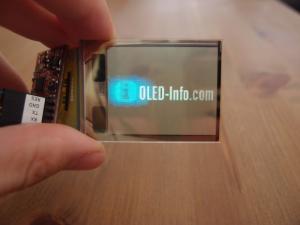 | 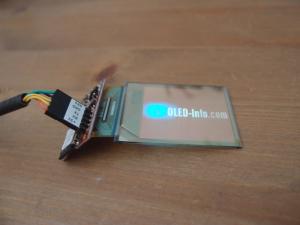 |
4DS is not an OLED producer, and I'm not sure who actually makes the panel itself. We know of two companies that offer transparent PMOLEDs (Futaba and NeoView-Kolon) but as far as I know neither of these companies offer a 2" panel - so, like I said, I do now know who's the actual producer.
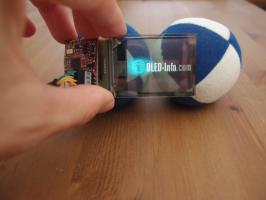 | 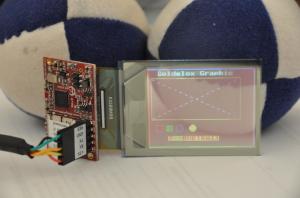 |
4DS are now offering the uTOLED-20 in their online store for $179. I'm sure that they will offer a nice discount on volume purchases.
What's in the box
The panel comes in a small box together with a small (150 mm) 5-way jumper cable so you can connect it to another device or board. 4DS also sent me a Serial-TTL UART to USB converter cable. This enables you to power the display and also download software into the controller board. You need to order it separately (for $19.95).
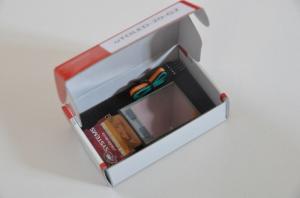 | 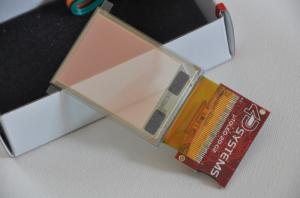 |
One annoying bit was that the screen was covered with plastic protectors on both sides (similar to the ones that come on your mobile phone displays). These was actually a bit difficult to remove as they left some sticky material on the panel itself which I had to carefully remove by hand. I was afraid I was going to scratch the display but it was fine.
Hands on
So the first thing I did is connect the module to a USB port. This powers up the controller and module which starts to show a nice graphic and text demo. And yes - it's indeed transparent which is pretty cool. It emits light in both directions - as 4DS says it's got "near 360° viewing angle".
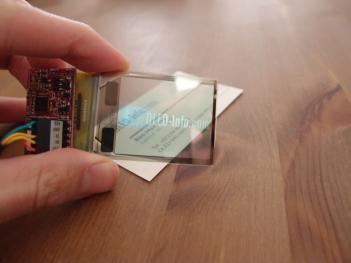
OLEDs are light emissive, and they cannot block light. This means that the OLED will always be brighter than its background. So if the thing you see behind your panel is dark, then it will look great. However if you place a white, bright page behind it, then it becomes difficult to read. Outside in the sun this thing is pretty useless.
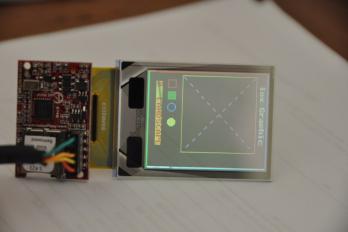
4DS' Workshop 4 IDE
4D Systems provides a very impressive integrated development environment (IDE) that lets you create your own user interface applications that drive this display (or any other display from 4DS). You can download the Workshop IDE at their site to check it out. There are several modes for this IDE, including a visual designer that lets you drop buttons, widgets, images and even videos on the panel, and then easily compile it and transfer it to the controller to test. Nice!
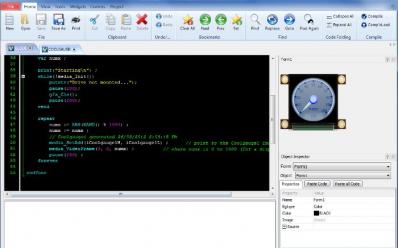
At first I couldn't get this IDE to work. A small text example worked fine, but when I wanted to load media files (such as images) on the micro-SD card - it didn't work. I had to contact their support and they helped me work this out. It turned out my micro-SD card reader was at fault (of all things!) and when I tried the built-in one from my laptop it worked easily. Their support engineer was very helpful and nice (thanks Dario!).
So I was able to get the OLED-Info logo showing on this card. This was cool. At first I used the normal logo with the white background (you can see it on the top-left of this site). The problem is that the white background limits the transparency of the panel. So I inverted the image to have a black background, I think that looks better on this display.
In fact I guess that if you really want to use a transparent OLED, you have to think carefully about your user interface and color schemes. As a general rule you'll want dark-backgrounds and as few unlit pixels as possible - if you want to make sure the panel is transparent (which is really the point, I guess).
Waiting for applications
While a transparent OLEDs is very cool and innovative, it's not clear what are the real applications for this. Having a novelty phone or MP3 player with a transparent display is nice, but it's not really useful, is it?
One possible application is embedding such panels in transparent glass used in windows. I'm not sure if this particular OLED is useful for this, but maybe. In any case I'm pretty sure some creative designers will find great and fun applications for transparent OLEDs, and I hope we'll soon see some products using this great little display. Today I'm aware of only two products that use transparent OLEDs: the Lonovo S800 phone (it has a 2.4" Futaba TOLED) and the Indonesian Nexian Glaze M-9090 (with a 2.4" TOLED as well).
Conclusion
The uTOLED-20 is a very interesting display. Having a transparent display is cool, even if it's small (2", 160x128) and is a sure way to get people to notice your product. The display itself looks good, and 4DS provides excellent software and support, at least from my experience.
The downsides are the high price ($179 for a single panel, although this is bound to be cheaper for volume purchases) and the limited usefulness of transparent OLED displays.
This module was kindly sent to me by Tigal - 4DS' distributor in Germany, Austria and Switzerland (they also handle sales and marketing in EMEA). Thanks guys!

